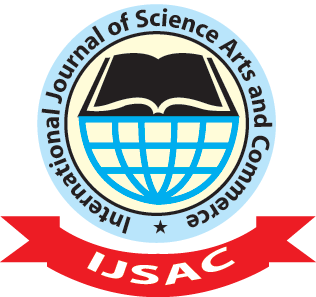Abstract
The paper delineates the relationship between economics inequality and criminal activities in the cities. The study analyzed 192 cities from 18 counties in Kansas City Metropolitan which comprised two metro cities. The study found significant correlation between selected inequality determinants. It shows 38 percent of crime per capita (CPC) is explained by socioeconomics determinants (R2= .379; p< .01). Few inequality determinants posit positive correlation with CPC such as social family disruptions (FHH= .9; p< .01), poverty (POV= .4; p< .05) and racial segregation (RACE= .14; p< .05). This study further analyzes the data into two different type of crimes; i) property crime; and ii) violent crime. The R2 for property crime per capita, PCPC is .375 (p< .01). With significant determinants FHH= .926 (p< .01), POV = .444 (p < .05) and RACE is .15 (p < .05). Meanwhile, result on violent crime per capita (VCPC) gave completely different picture, R2= .271; p< .05. VCPC is only explained by previous crime (LAGCRIME= - 82.31; p< .05) and percentage of male unemployment (UNEMP= .498; p< .05) determinants.
Keywords: Poverty, Inequality, Crime, Economy, Socioeconomic
1.0 INTRODUCTION
Crime has become a major concern across the world and gained popularity in researches and discussions. Undeniable, it is an important indicator for quality of living standard in neighborhood as individual make judgments and comparing their costs and benefits, before decided to locate in a residential or workplace area. Criminal incident has become important indicator as availability of jobs, education, and price of land, transportation and health services in making decision. Today, there is a growing study and consensus that resource deprivation such as poverty, inequality, unemployment and education are the cause for crime or delinquent activities like [Buonanno & Montolio (2008), Fajnzylber (2002, 1998), Machin & Meghir (2000), Cerro & Meloni (2000), Morgan (2000), Wolpin (1978), Freeman (1972), Becker (1968), Fleisher (1966)].
Poverty is defined as deprivation of economics opportunity and can be distinguished between absolute poverty and relative poverty[1]. Undeniable, the income gap between the richer and the poorer become huge and broad. The poverty rates were declined from 51.9 percent in 1981 to 15.5 percent in 2015 (est) and number of people living in extreme poverty fell almost 60 percent to 0.97 billion people from 1981 to 2015 (est). However, we see the number of people living in on less than $2.00 a day increased from 2.5 billion in 1981 to 2.9 billions in 1999 and to 2.6 billion in 2005 (World Development Indicators, 2010). Lower education attainable makes them difficult to secure a job and cost of living inflation worsened their condition. This is why poverty is so prevalent to this marginalizing group.
This poverty phenomenon worsened by the global financial crisis and food price spikes, which cause poor people, remain in poverty through unemployment and worsen their income. According to World Bank (The World Bank Development Prospects Group, 2011), price indices for food rose from 147.0 in 2006 to 224.1 in 2010, and was peak in 2008 at 247.4 (2000=100). The World Bank foresaw around 100 million will fall into this poverty line due to global crisis. Food price spiking makes people unaffordable to get the same value of consumption due to decreasing in real income. It makes people more stress and would lead to delinquency behavior such as, theft, robbery, fraud, pick pocket and others as said in theories.
Interestingly, unlike others, the study employed interdisciplinary perspectives; economics, sociological and criminological disciplines. Perhaps it gives better picture of the relationship between inequality and crime. Kansas City Metropolitan region has been chosen as a sample and 192 cities were examined to explain the relationship between economics inequality and criminal activities. The remainder of the paper organizes as follows; the model and methodology will be discussed in section 2, after the introduction. The result and discussion of the study are elaborated in section 3. Finally is a conclusion in the last section.
[1] Absolute poverty refers to the situation in which a person lacks basic human needs, such as food, shelter and clothing that help to sustain human life. Meanwhile, relative poverty exists when necessity to one person is not uniformly a necessity to others. Needs may be relative to what is possible and are based on social definition and past experience (Nunes, C, 2008).
